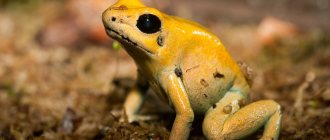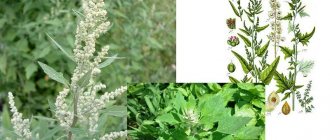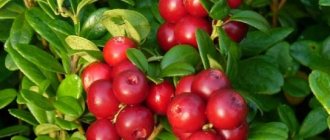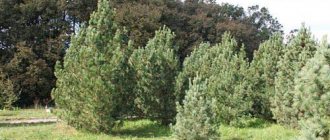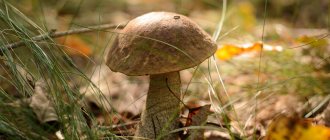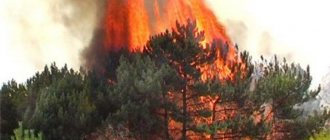In the summer, especially in July and August, walking in the forest becomes dangerous, as poisonous berries ripen. Some, out of curiosity, taste them and even put them in the basket. This should never be done, because even vapors from an inedible plant can lead to poisoning. Before you go on a forest walk or hike, you should familiarize yourself with species that can harm your health and tell your children about them.
Crow's eye
Crow's eye grows in mixed and deciduous forests and is quite common. The main difference is the whorled arrangement of the leaves. The berry is dark blue, almost black, located at the very top of the thin stem. Externally, the fruit looks like a crow's eye, which is why the species got its name. All aboveground and underground parts of the plant are poisonous, but the berries are especially dangerous.
Due to its attractive appearance, a child may want to eat the berry. The fruits contain a poison from the group of saponins - paristifin. It depresses the central nervous system, makes breathing difficult and provokes seizures. In severe cases, cardiac arrest may occur.
In some recipes of traditional medicine there is a mention of the raven's eye.
However, under no circumstances should such drugs be prepared. Evidence-based medicine denies any health benefits of the berry.
Apricot and cherry pits
Apricot and cherry trees are found everywhere.
The fruits of these plants have an excellent taste, but the seeds are dangerous. The nucleoli contain a dangerous substance - cyanide. Many people eat poisonous fruit seeds without thinking about the possible danger. It is recommended to remember that kernels from varietal fruits that have a sweetish taste are suitable for food. If there is bitterness when consumed, then this product should not be eaten.
Cyanide poisoning is dangerous to health and can cause death, so it is necessary to provide assistance to the victim as quickly as possible. There is weakness, sore throat, nausea. The pulse changes sharply, and the respiratory process is disrupted. The cause of death is heart failure or respiratory arrest.
We recommend: Ergot poisoning (ergotism) - symptoms and signs of the disease
Wolfberry (wolf bast)
In early spring, the plant attracts attention with clusters of pinkish flowers, somewhat similar to lilacs. At this time, there is still almost no greenery in the forest, so it is impossible not to notice the wolf’s bast. But you shouldn’t admire the beautiful inflorescences, much less inhale their aroma or pick them to take home. The entire plant is poisonous.
Wolf's bast has small, elongated, lance-shaped leaves. You can also recognize a poisonous wild berry by this feature: if you try to break a twig, it will not give in, but such an experiment can only be carried out with gloves, and it is better to refrain from dangerous experiments altogether. You will have to pull out the entire bush, which is what some people do. The plant is subsequently discarded. This attitude towards the wild species has led to the fact that there are very few of them in the forests now.
In August, bright red berries ripen , located in the leaf axils of last year's shoots. This is another characteristic feature that allows you to recognize the wolfberry. If you taste the berry, damage to the gastrointestinal tract will develop.
The plant is used for the production of medicines, but its use at home is strictly prohibited.
Popular snowberry varieties
In nature, there are fifteen species of snowberry. Some of them have gained popularity among people and are planted more often than others.
Kinds:
- White snowberry is a popular plant most often used for plots and designs. An unpretentious bush, white berries, flowering from mid-summer to autumn. Reaches one meter, grows on any soil, and is frost-resistant.
- Pink snowberry is a beautiful plant that grows up to a meter. The flowers are pink and appear in August. The fruits ripen in late autumn and are distinguished by a coral or purple hue. After the leaves fall, the berries remain for a long time. The variety is not resistant to frost, so it is grown in the southern regions.
- The snowberry Dorenbose got its name thanks to the Dutch scientist who bred it. The hybrid combines the properties of several plants. It includes varieties Mother of perl, Magic berry, White Hedge, Magic Candy, Amethyst. They all differ in leaf size, color of flowers and fruits, and growing conditions.
- Western snowberry is found on mountain peaks and coastal areas. Flowering continues throughout the year, the leaves are small, fruits are formed parallel to flowering.
We recommend: Is girl’s grapes poisonous or not for adults and children - application
Breeders continue to develop new species of shrubs. Snowberry is popular and is often used in landscape design.
May lily of the valley
Everyone's favorite flower is not as harmless as it seems. If ingested, any part can lead to poisoning. The danger is aggravated by the fact that lily of the valley grows not only in the forest, but also in flower beds, and it is widely used in folk and official medicine.
You cannot prepare the drug at home, as an overdose can cause poisoning. When taking a pharmaceutical drug, you should be careful.
Berries, stems, leaves and flowers contain the following substances:
- convalloside;
- convallotoxol;
- convalyatoxin;
- other glycosides.
The range is gradually shrinking due to annual collections. Favorite habitats are floodplain oak forests, glades, forest edges, deciduous and pine forests.
Regions where lily of the valley is now widespread:
- Amur region;
- Kuril Islands;
- Sakhalin;
- Primorye;
- Transbaikalia;
- European part of Russia;
- Belarus;
- North America;
- China;
- Caucasus;
- Asia Minor.
Flowering begins in May and continues until mid-June . The basal rosette consists of several small and two large leaves that cannot be ignored. After flowering, small red berries ripen, which pose the main danger: you need to make sure that children do not eat them. There is also no need to place bouquets of lily of the valley in a vase, since the plant releases toxic substances.
Signs of poisoning: headache, dizziness, drowsiness. When ingested, attacks of nausea, vomiting, and convulsions begin.
Poisonous plants of the Moscow region
During the summer holidays, thousands of people go on vacation to the forest. But rarely does anyone think at this moment about the dangers that can await a person in nature. However, one of them is poisonous plants in the Moscow region. It can sometimes be very difficult to distinguish them from non-dangerous species without having a stock of knowledge in this area. Poisonous plants are dangerous because outwardly beautiful and harmless flowers and berries can kill a person. This is their cunning.
Below in the article is a description of poisonous plants in the Moscow region that you should beware of. To the list of dangerous representatives of the flora of this region you can add henbane, hogweed, slander, datura, bittersweet nightshade, lily of the valley, black elderberry and many others.
Yew berry
A tree with soft needles, strewn with bright red lights of berries, looks very beautiful.
Yew is valued for its antibacterial properties. Products made from its wood do not rot for centuries. However, from the beneficial properties comes a harmful one: if you eat a berry, you can get poisoned.
The pulp of yew fruits is harmless, but the seeds are deadly poisonous. All parts of the plant, excluding the juicy part of the berries, contain various bactericidal substances. It’s not hard to guess what will happen if you chew a leaf or gnaw a twig.
Nowadays, yew grows mainly in nurseries and garden plots . It is very rare in the wild, since due to the high value of the wood, yew was actively exterminated over several decades. The plant is listed in the Red Book - another reason not to touch its berries.
Poisonous bushes with black berries
Most black berries not only look beautiful, but also taste good.
But it is among dark fruits that the most common poisonous species are found. Of course, no one belittles the benefits of currants or blackberries, but crops popularly nicknamed “wolf berries” can cause significant harm to the body, including failure of internal organs and paralysis of the nervous system.
Maiden grapes - are the berries poisonous or not?
The fruits of this plant remind us of ordinary grapes, but it is still better not to eat them. The berries are very astringent to the mouth and have a strong, unpleasant taste.
In fact, the fruits contain oxalic acid, the same one that is used to remove rust from metal.
Of course, for a fatal outcome, a person will need to eat 20 g of pure acid, but for disorder, poisoning or even an ulcer, just a handful of ornamental grapes is enough. But it certainly looks spectacular - landscape designers love to use this plant as hedges or to weave the walls of gazebos.
Voronets spica - are the berries poisonous or not?
The berry is poisonous due to alkaloids. These fruits can be mistaken for chokeberry or bird cherry. But there is one feature that can protect you - the plants emit a very strong unpleasant odor.
The culture is found rarely, at a great distance from each other. By the way, black paint is still made from Voronets.
Elderberry herbal
This plant is entirely poisonous. Poisoning occurs as a result of amygdalin, which, after entering the body, becomes hydrocyanic acid.
Elena Solomatina
Nutritionist
The fruits of elderberry are confused with black elderberry. Only the second one is suitable for jam!
— Elena Solomatina Dietitian
Herbal elderberry is used only in folk medicine. Infusions of the flowers of this plant are excellent for gargling and reducing irritation of the mucous membrane.
Buckthorn - are the berries poisonous or not?
The fruits of this plant are often confused with bird cherry.
People call them “wolf berries”. They are highly poisonous and are strictly prohibited for consumption. Although birds readily eat them. Of course, all these properties relate primarily to buckthorn. You can distinguish it by its tree - under a thin layer of dark bark, the trunk has a crimson-red color. It is enough to scrape off one branch with a knife.
Lakonos or Phytolacca americana
In some books you can read that jam is also made from this plant. Now this crop can be found not only in the wild, but also in garden plots as decorative plantings.
Be sure to read:
A little about orange zest: an amazing fragrant additive with a lot of beneficial properties
The plant has a spike-shaped inflorescence, which as it matures becomes a heavy spike with a cluster of dark berries. In general, the plant is consumed as food - in America you can buy the leaves and stems of this plant in grocery stores. However, the crop is still dangerous - the phytolacca root contains toxins, which, as the fruits ripen, begin to spread throughout the plant.
It is not recommended to grow milkweed for food on your own property - there is information about the death of animals that grazed in such fields. It’s better to leave it to a professional - you can buy phytolacca in large stores targeting the Western market.
Common privet
Privet is used to make hedges. In urban conditions, you will not see berries on this plant, but in wild conditions they are present and can easily be confused with bird cherry.
Interesting fact - Privet belongs to the Maslinov family. The variety is a distant relative of olives.
Privet is a wolfberry. This plant is highly poisonous.
Crow's eye
This plant was considered mystical in ancient times for its shape. It is impossible to confuse it with anything. Crow's eye has a height of 25-35 cm, at the end of the stem four leaves grow in a regularly crosswise position.
In the second half of summer, one blue-black berry, similar to a blueberry, grows on the peduncle. The plant is completely poisonous, but it is the berry that contains the most toxins - if you consume more than 10 pieces, there is a risk of paralysis.
Asparagus berries (Asparagus pinnate)
Asparagus is a climbing shrub that resembles needles, which are collected in bunches.
Asparagus bears fruit with small blue-black berries. It is in them that the main danger lurks - small berries are extremely poisonous. The fruits should not be eaten and should also be kept away from children and pets.
The most interesting thing is that the stems of many types of asparagus are edible and very healthy.
Elena Solomatina
Nutritionist
It has become popular among people that edible species are called asparagus, and decorative species are called asparagus. Although in fact these are two names for the same plant.
— Elena Solomatina Dietitian
Red-fruited and spicate crow
Both varieties of the crow belong to the ranunculaceae family. It is a herbaceous perennial with compound, toothed leaves. Grows in mixed forests, mainly among aspens, birches and pines. The berries are medium-sized, shiny, almost black, collected in clusters.
Distribution range of the common crow:
- Altai;
- Western Siberia (southern part of the forest zone);
- Europe.
All parts of Voronets contain alkaloids and transaconitic acid. The bush repels with an unpleasant smell, as if warning of danger, so you are unlikely to have the desire to taste the berry. Still, you need to know that 2-3 fruits is a significant dose. The plant is not used in folk and official medicine. It does not have any medicinal properties.
In the old days, black pigment was obtained from the berries, which was used to dye woolen products.
The red crow is also very dangerous. Due to its strong unpleasant odor, this plant is popularly nicknamed stinkweed. The red-fruited crow differs from the spiked crow only in the color of the berries. Species range:
- Far East;
- Western and Eastern Siberia;
- European part.
Belladonna (belladonna)
The plant is so poisonous that ingesting a small piece of the berry can cause cardiac arrest. All parts of belladonna contain the plant alkaloid atropine.
Belladonna's range:
- North Africa;
- Crimea;
- Mediterranean;
- Asia Minor;
- Eastern and Central Europe;
- Caucasus.
Belladonna grown on plantations in the Krasnodar region is used in medicine. In natural conditions, belladonna is not very common, but there is still a risk. In the old days, the juice of this plant was rubbed on the cheeks to make the face rosy. But such experiments led to the fact that beauties died at a young age.
If you see a plant in the forest or at the edge of the forest, it is better to avoid it. Belladonna should not even be sniffed, as the toxic volatile substances cause severe headaches.
Nightshade bittersweet
Several species of nightshade grow in Russia, and almost all of them are poisonous. But the greatest danger is posed by a plant with small red berries collected in clusters. The fruits are slightly elongated and similar to tomatoes, which also belong to the nightshade family.
The berries contain the glycoside dulcamarin . Its effects on the body are similar to atropine. When poisoning occurs, the nervous system suffers, heart function is disrupted, and breathing becomes difficult. Despite the fact that homeopathy considers nightshade a medicine, you should not use any potions prepared from the berries at home. Pharmaceutical drugs can be taken only on the recommendation of a doctor and in strict accordance with the instructions, without exceeding the indicated dosages.
In addition to bittersweet nightshade, black nightshade is common in Russia. It has small berries with a shiny surface. At first they are green, but as they ripen they turn black. Unripe fruits are poisonous, and in the old days ripe fruits were used to make pies, pies, jelly and jam. Only well-ripened berries were used for food.
Poisonous bushes with red berries
Just like black berries, red berries can also be poisonous and pose a serious threat to humans. Let's look at some plants that are most commonly found.
May lily of the valley
Everyone knows the flower with bells for its delicate appearance and pleasant aroma. However, the toxicity of lily of the valley is also a well-known fact.
When the crop fades, orange berries are produced. The whole plant and the berries themselves are very poisonous; you can even be poisoned by the aroma of the flowers.
Nightshade
Often travelers in the forest can come across a bush with fruits similar to tomatoes. Do not pick such fruits - this is a wild nightshade, a close relative of potatoes and domestic tomatoes.
Wild tomatoes are very poisonous and have a bittersweet taste. Unripe fruits pose a particular threat. They contain a record amount of solanine.
Forest honeysuckle
The berries of this plant are very similar to red currants. But the arrangement of the fruits is different - the red berries sit in pairs at the very top of the branch. Despite the fact that birds love honeysuckle, it is poisonous to humans.
Wolf's Bast
This plant is very similar to sea buckthorn.
Eating berries for human food will not bring anything good. The whole plant and especially the berries are very poisonous. Interesting fact. Wolf's bast belongs to the wolf's berries, and is also officially called wolf's berry. Formally, the name of this culture is consonant with the popular name of a group of poisonous fruits.
Be sure to read:
How to properly freeze lemons at home?
Red-fruited crow
This plant attracts with bright red berries. All parts of the plant are very poisonous, especially the berries.
When the juice of the red crow gets on the skin, a burn appears, even causing blisters.
Yew berry
This plant is best admired from afar. Red beads, like lights, attract attention among the lush pine needles. But you need to know that yew is poisonous.
The plant contains various toxic compounds and is also highly bactericidal. In ancient times, its wood was highly valued for this property. The material was used to make sarcophagi. Furniture was also made from yew - it was valued for its red color and durability.
At the moment, yew is listed in the Red Book. It is mainly bred in nurseries and used in ornamental plantings.
The pulp of yew fruits is generally edible. But it is better to refrain from consuming the plant, as the seeds contain strong poisons.
Drupe berry: poisonous or not?
Drupe grows up to 30 cm in height. This plant is a close relative of raspberries, blackberries, and cloudberries. Blooms in May. Fruits in July – August. The berries are bright red with a large seed inside.
Do you often go to the forest to pick wild berries?
Yes, sometimes we go out to pick strawberries
0%
No, we grow varieties on our plot that we firmly believe in
0%
To be honest, I don't see the point. For a long time now everything can be bought in the store
100%
Voted: 1
It tastes sour, somewhat reminiscent of pomegranate. Drupe fruits are confused with the poisonous fruits of forest honeysuckle.
Drupe berries are not poisonous. It is often used for cooking and medicinal purposes.
Inedible berries
In addition to poisonous berries, inedible ones are also found in Russia. They do not pose any particular danger, although they are not suitable for consumption. One of these species is brittle buckthorn. The shrub prefers areas near streams, lakes and rivers. The berries begin to ripen in August.
Here's how their color changes:
- green;
- greenish-yellow;
- yellow-red;
- red;
- black.
At the same time, you can see fruits of different shades on the bush. The drupes are hidden in the axils of the leaves, each berry is attached to a stalk. In official medicine, preparations prepared using buckthorn bark are used as an emetic and laxative. Fruits are also mentioned in folk recipes, but their benefits have not been proven. However, they do cause diarrhea and vomiting, so it is best not to eat them unless necessary. Birds readily feast on ripe buckthorn - it is harmless to them.
Forest honeysuckle is another inedible species. The shrub is used for decorative purposes. Forest honeysuckle berries are bright red. A distinctive feature is the paired arrangement. Birds peck ripe fruits, but people should not try them. There is no risk of poisoning, but vomiting or diarrhea may occur, since the berries have an emetic and laxative effect.
Edible honeysuckle is a close relative of the forest honeysuckle. In autumn, oblong dark blue berries, covered with a thin coating, ripen. Many varieties of edible honeysuckle have been developed, and work in this direction continues. The cultivated species can also be found in the forest, as birds peck the berries and spread the seeds tens of kilometers around.
Top 20 poisonous berries in Russia with photos and names
With the onset of warmer weather, many try to get out into nature, take a walk through the forest, or relax by a pond. For safety reasons, it is worth learning about poisonous berries in Russia in order to avoid possible troubles. Our rating includes the most poisonous berries found in our area. We recommend not just remembering their names, but carefully studying the photos, determining which edible berries they can be confused with, and what differences you should pay attention to.
Also read on our website: Mulberry: growing the plant, beneficial properties and composition of mulberries
May lily of the valley
Lily of the valley is a flower well known to many; during the flowering period it emits an incredibly pleasant aroma. But not many people know that after the lilies of the valley fade, red berries appear in place of the white bells in September - October. They are small, the size of a pea, have a round shape and a dense structure. Despite their attractive appearance, eating them is strictly prohibited.
Lily of the valley berries contain the substance convallatoxin, and this plant poison is present in all parts of the plant, but its concentration is highest in the fruits. This substance is used for medicinal purposes as a cardiotonic agent for acute and chronic heart failure, but if used uncontrolled, it can lead to convulsions, cardiac arrhythmias, and even death.
Animal tests have shown that when convallatoxin is administered to a dog at a dose of 0.15 mg/kg of animal weight, a sharp increase in blood pressure, increased cardiac activity, cardiac arrhythmia and cardiac arrest occur.
Maiden grape (five-leafed)
In parks, forest plantations, and city squares you can often admire the beautiful dense thickets of virgin grapes. In the autumn, the “pattern” of its crimson leaves is diluted with clusters of dark blue berries covered with a bluish waxy coating. Externally, the berries resemble blueberries or blueberries, but grow on clusters, like elderberries.
Not many people know that this is a poisonous shrub. Due to the wide distribution and ubiquitous growth of children from an early age, it is important to teach that the berries of girl’s grapes are inedible. They have a sour taste, and when consumed in large quantities can cause symptoms of intoxication.
Nightshade bittersweet
Bittersweet nightshade is popularly called wormworm, viper wormworm, and crow berries. The poisonous bush grows along roadsides, near landfills and in the courtyards of abandoned houses. Its leaves and fruits emit a foul odor, showing with all their appearance that they are unsafe to eat. Nightshade berries are spherical in shape and red in color. Outwardly they resemble small tomatoes, inside they are juicy and have many seeds.
The potent substances contained in different parts of the plant make it a popular traditional medicine. Moreover, bittersweet nightshade is included in the German Pharmacopoeia. In our country, it is not recognized by official medicine, but traditional healers and herbalists actively use it to treat diseases of the respiratory system, dermatological diseases, gout, dropsy, female gynecological problems, tumors of various etiologies.
Nightshade black
Unlike red nightshade, black nightshade berries are dangerous only when unripe - while their color is green or brown. They contain the poison solanine, which is also found in unripe tomatoes and green potato skins.
The evenly black berries, easily separated from the stalks, are considered edible. They can be eaten fresh and used as a culinary ingredient for making preserves, jams, and compote. True, fresh black nightshade berries have an unpleasant aroma.
Buckthorn brittle
Brittle buckthorn grows in deciduous forests; it often settles near water bodies. The shrub has oval dark green leaves, similar to cherry leaves, and very fragile thin branches, from which it gets its name. The branches of the bush have brown-burgundy bark and are speckled with numerous light brown lentils.
The plant blooms with white flowers twice a year - in May and August. Poisonous forest berries ripen by the end of summer, and a second time by the end of autumn, acquiring a uniform black tint. Due to repeated flowering, the berries on the bush have an uneven degree of ripeness. Among the black fruits there are green and reddish berries.
Also read on our website: There is a white coating on grape berries: what to do to save the harvest?
The berries have a sour taste and an unpleasant aftertaste. They contain dangerous substances that can lead to serious poisoning. For a child, a lethal dose is considered to be about 10 berries, for an adult - 20 - 25 pieces.
Interesting: there is a folk method for determining the toxicity of berries. It is believed that if birds peck at the fruits (this is evidenced by pecked berries and the presence of droppings on the branches), then they are also safe for humans. But brittle buckthorn confirms that relying on this method is unsafe. Birds eat buckthorn fruits without consequences, but they are poisonous to humans.
Forest honeysuckle
In July–August, forest honeysuckle ripens in the forests. Its berries resemble red currants, but are collected not on branches, but in groups of 2–3 fruits. Forest honeysuckle berries are small, red, juicy. Birds eat them with pleasure, but humans can be poisoned by them.
In addition to the wild variety, there are also cultivated varieties, such as honeysuckle Honeysuckle. This plant variety is used in ornamental gardening for creating hedges and landscaping gazebos. Honeysuckle Honeysuckle has healing properties and is used in folk medicine, but its berries are also poisonous. Their consumption causes vomiting, abdominal pain, and intestinal upset.
Wolf's bast (wolfberry)
Popularly, wolf bast is also called “wolf berry”; the poisonous plant is dangerous not only for its fruits, but also for its aroma during the flowering period, and for its bark, which, when touched, can cause blisters on the skin.
The plant is found mainly in mixed forests. During the flowering period, the shrub is covered with lilac flowers, similar to lilacs. It is not safe to inhale the aroma emanating from flowers for a long time. This may lead to headache, dizziness, nausea, coughing and sneezing. By autumn, bright red berries appear in place of flowers, like clinging to the branches of a bush. It is forbidden not only to eat them, but even to touch them with your hands.
Red-fruited crow
The bright red fruits of the plant attract attention and look quite appetizing, but in fact they are dangerous to humans. When ingested, they can cause severe vomiting, dizziness, and headaches.
The berries of the bush have an elongated shape, located on the branches in clusters of several dozen fruits. As the fruits ripen, they change color first from green to white and then to red.
Voronets spica
Voronets spica is similar in appearance to the plant variety described above, but has black fruits. They are very poisonous. When fruit juice comes in contact with human skin, it can cause blisters and irritation. Even a couple of berries are enough to cause digestive problems, vomiting and diarrhea.
Elderberry herbal
Elderberry is a herbaceous perennial shrub with a distinct unpleasant odor. It is also called stinking elderberry, and due to the small height of the stems - dwarf elderberry.
The plant blooms and bears fruit like its close “relative” - the black elderberry: its flowers are white, small, collected in umbrellas, and the berries are round in shape and blue-black in color. But black elderberry grows in the form of a bush or low tree.
Important! Almost all parts of elderberry are poisonous. Unripe berries of the plant are especially dangerous for humans.
Crow's eye four-leaf
In the forests you can find an amazing looking plant - the raven's eye. It has 4 large green leaves, diverging in different directions in the shape of a star, one long green shoot, on the top of which one fruit is formed - a blue round berry. The fruit ripens in August.
The plant is poisonous. Leaves, berries and rhizomes contain a dangerous substance, saponin paristifin. When consuming the fruits, cardiac arrest may occur, the leaves may cause disruption of the central nervous system, and the rhizomes may cause vomiting.
Yew berry
The berry yew differs from other conifers in that instead of cones it grows red juicy berries. The pulp of yew berries is considered harmless, but the seeds, which are located inside the fruit, are poisonous. The needles, branches and bark of the plant are also dangerous to humans. They contain toxic substances: alkaloids ephedrine and taxine, glycoside taxicantin.
Common privet
Common privet is popularly called wolfberry. By the way, this is the name of many inedible or unknown berries.
Also read on our website: Cranberries: composition, calorie content, beneficial properties of berries
Privet is a popular garden plant. She can often be found on the streets and parks of the city. The shrub blooms with small white flowers collected in inflorescences. In September, black glossy round berries, 5–6 mm in diameter, appear on the bushes. The berries are poisonous and should not be eaten.
Belladonna (belladonna)
Belladonna or belladonna is poisonous from the roots to the tips of the leaves. Its fruits are especially dangerous. They have a round shape, black shiny skin, and a diameter of up to 1.5 centimeters. The berries taste sweet and sour; inside the pulp there are many small seeds.
For serious poisoning, which can result in death, an adult needs to eat 12 - 15 belladonna berries, and a child needs 2 - 3 pieces. Even a couple of berries can cause convulsions, visual disturbances, hallucinations, and increased body temperature.
American Lakonos
An unusual-looking and fruit-bearing plant - laccone or phytolacca - was brought to us from America. There it is widely distributed in the wild. In our area it is used for ornamental gardening. Laconia blooms with white flowers that form oblong-shaped inflorescences, on which fruits ripen by the end of summer, filling with dark purple juice. They look like blackberries, collected on a thick base - a candle. The berries have a varnished surface, which determines the name of the plant.
Young stems and unripe berries of the plant do not pose a threat to human health. But as the fruits ripen, dangerous substances accumulate in them. The accumulation of poisons in the plant is indicated by the crimson coloring of the shoots. Eating milkweed berries can lead to breathing problems, stool disorders, and vomiting. There are known cases of death of domestic animals that consumed the plant.
Snowberry white
Children really like picking the snow-white fruits of the snowberry. They burst in an interesting way when you step on them. But it is important to know that this is a poisonous shrub. Under no circumstances should you eat berries. When consumed orally, they cause intoxication of the body, manifested by nausea, dizziness, and loss of consciousness.
Spotted arum
Spotted arum is of high decorative value. At the end of summer, the plant sheds its leaves, exposing fleshy stems on which large clusters of round berries are located.
When unripe, the berries are green, and the red color indicates their full ripening. The plant is found wild in the forests of Ukraine, Russia, Moldova, and Central Europe. The berries contain dangerous substances that have a toxic effect on humans.
Kupena fragrant
Kupena fragrant is a distant “relative” of the lily of the valley. The flowering plant has similar features, but the flowers and leaves are much larger. After the white bells fade, blue-black berries form on the shoot. They are poisonous and unsuitable for food. White kupena is used in landscape design, and its fruits and leaves are used in folk medicine.
Swamp whitewing
In a swamp, humans face many dangers, including the swamp whitefly. The plant has an unusual “appearance”: it has large leaves on long stalks, and the flower has a white leaf-veil.
Calla lily is used in floristry and landscape design, and is better known as the calla flower. When growing wild, dark red berries are formed from its cylindrical inflorescences-cobs. Under no circumstances should they be eaten. They can cause severe poisoning.
Euonymus
Euonymus berries look like exotic fruits: they consist of 4 bright red capsules with black seeds inside. But behind the bright appearance lies a danger to human health. The berries contain toxic substances that, if consumed internally, can cause intestinal bleeding.
Dangerous plants in Belarus
Almost all the inedible and poisonous shrubs that grow in Russia grow on the territory of the Republic of Belarus. However, the species composition is slightly different, and not only berries are included in the list of the most toxic. The following plants are poisonous in Belarus:
- henbane white and black;
- wolf's bast;
- lily of the valley;
- spotted hemlock;
- vekh poisonous;
- belladonna;
- Canadian goldenrod;
- hogweed;
- Ukrainian ambrosia;
- Buttercup is pungent.
Vekh poisonous has a pleasant smell and tastes like radish. This can be confusing to an ignorant person. It is enough to eat a piece of the plant to be fatally poisoned. Typical symptoms:
- burning in the mouth;
- colic in the abdomen;
- convulsions;
- seizures;
- nausea;
- vomit; foam at the mouth;
- unsteady gait;
- paralysis.
Symptoms of poisoning from other plants may vary. For example, hogweed juice causes severe burns if a ray of sun hits the area of skin that came into contact with the plant. Ragweed is a strong allergen that causes lacrimation, runny nose, redness of the skin, swelling, blurred vision, and fever. The other species on the list are no less dangerous.
Important: when in a field, meadow or forest, especially in a foreign country, you should not pick up, let alone try, unfamiliar plants. Children should be taught the rules of behavior, and animals, if they are taken with them, must be closely monitored.
Prevention measures
It is possible to avoid poisoning by fruits and parts of the snowberry if you follow safety precautions. It is recommended that people planting a plant on the site know them.
Prevention:
- It is necessary to explain to children that snowberry berries cannot be eaten; parents should closely monitor their children.
- Adults are not recommended to eat berries to avoid unpleasant symptoms.
- It is possible to use snowberry as a medicine only with the permission of doctors.
- It is necessary to prepare folk remedies from parts of the bush in compliance with all proportions and recipes; the dosage cannot be exceeded.
Snowberry is a beautiful plant that is often found in nature and design. Due to its properties it is used in garden plots. However, it is recommended to remember that the bush is poisonous and can cause a lot of trouble. Preventive measures will help avoid poisoning.
We recommend: Sarin gas: effects on humans, application
Actions in case of poisoning
After swallowing or chewing a piece of a plant, berry, leaf or root, you should not wait for dangerous symptoms. The stomach should be rinsed immediately.
To do this, the victim is given one of the following to drink:
- 400 ml of water with a dissolved teaspoon of salt;
- weak solution of potassium permanganate (2 cups);
- 2-4 glasses of water and 1-2 tablespoons of black activated carbon (or 1-2 tablets of white).
Induce vomiting to expel the contents of the stomach. If necessary, repeat the procedure. A cold compress can help a person who is agitated. If the victim has stopped breathing, you need to give him chest compressions and artificial respiration. If possible, you should take the poisoned person to a medical facility or call emergency assistance.
If you see an unfamiliar plant in the forest, you can photograph it and then try to determine what species it belongs to. Nothing else can be done with the found specimen.
How do poisonous plants affect the body?
Such plants have different effects. Poisoning can occur if eaten, and sometimes fleeting contact with the leaves is enough to cause a burn on the skin. In case of poisoning, a person may experience dizziness, weakness, pain throughout the body, hearing and vision impairment. There are very severe cases when paralysis and even death occurs. The time during which symptoms indicating poisoning become apparent also varies. In some cases - a matter of minutes, and in others - days.
